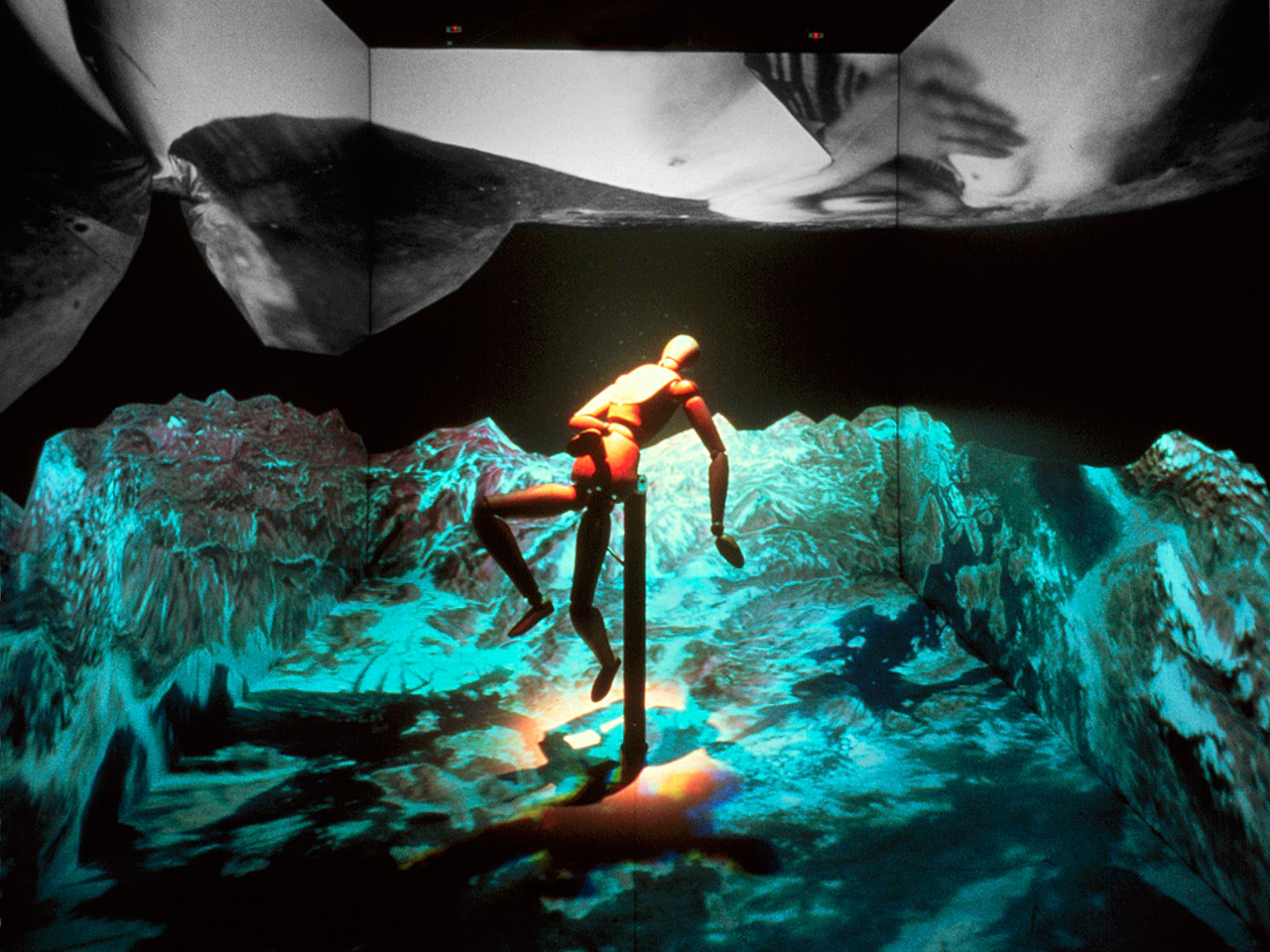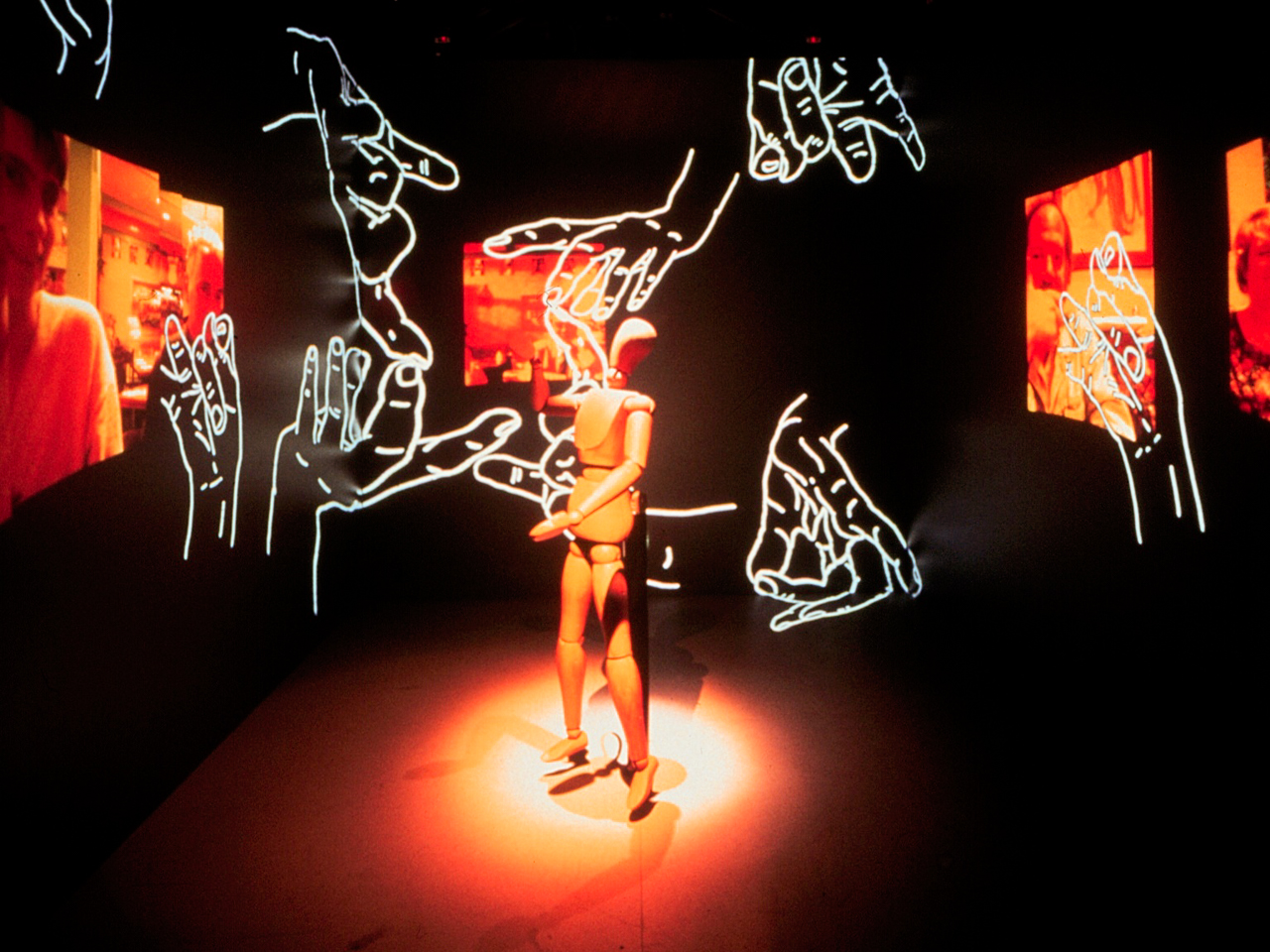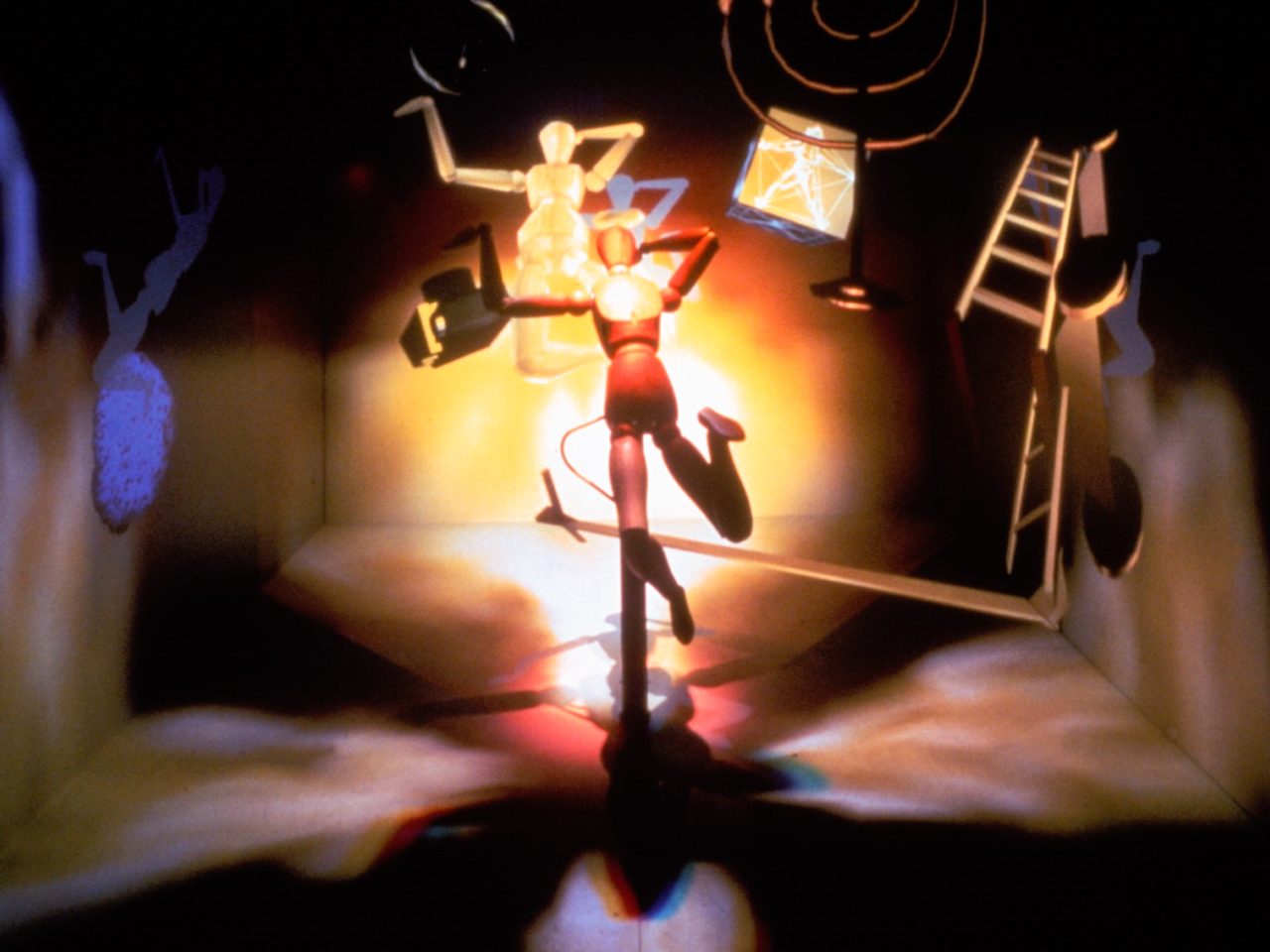conFiguring the CAVE
conFiguring the CAVE shows seven distinct audiovisual worlds which together constitute an aesthetic and conceptual discourse on the theme of the conjunction of body and space. The work takes as its starting point the historical perception of the harmony between macrocosm and microcosm and reconstitutes this equivalence in a technologically conditioned form, which reflects the dialectics of our contemporary perception of our location in the world. Algorithmic and representative imagery, supported by an evocative electronic musical score, create an open narrative structure that each viewer can configure interactively and interpret individually.
At the center of the installation’s four-walled projection CAVE is a wooden mannequin that participants can use to control transformations in the audiovisual space. Visitors are invited to play with this puppet, moving body limbs and head in whichever way they wish, and in so doing they can explore each of the seven virtual words. The visitor can move from one world to the next by moving the puppet’s hands so that they first cover and then uncover the puppet’s ‘eyes’. In each world, the interactive functionality of the puppets differs slightly and visitor will discover the different ways the images and the music react to their playing with the puppet.
conFIGURING the CAVE’s seven domains are:
MATERIAL. A constellation of geometric forms moves about in a complex yet organic symmetry. Though they start in the distance, the action of the puppet causes them to come closer and enter the CAVE space. Some of these shapes carry fish-eye photographs on their surfaces—pictures of a tearoom, the foyer of the Tokyo Opera City building and the homes of the homeless in Shinjuku Station. At the center of this organic constellation a long wooden rod moves dramatically in and out of the CAVE space, sometimes saturating it with its interior colours.
LANGUAGE. Layered walls of changing texts, alphabetic characters and hieroglyphics constitute the impression of a universal matrix of languages and information. On the CAVE floor there is a representation of an ancient Chinese rubbing stone carved with text. All this is set against the background of an ancient Hebrew astrological map. All movements of the puppet's body and limbs dynamically shift these text walls about in the CAVE space. Tilting the puppet upside down suddenly creates a vortex of alphabetic signs around its head.
MACROCOSM. Representations of the five Platonic geometric solids continuously move from the distance into the CAVE space. Movement of the puppet’s limbs interactively deforms their symmetry. These geometric shapes are set in a visual space of three rotating concentric spheres—the first is the eminent surrealist map of the world, the second is a satellite picture of planet Earth where the continents have been transformed into clouds, and the third, in the far distance, is a traditional astrological map of the heavenly bodies.
ASSOCIATION. Four spirals of line-drawn hands morph through a variety of gestures. A panoramic photographic background shows a group of convivial people (many of whom are media art personalities) sitting around a table in a bar. Moving the puppet’s hands and arms affects the movements of these animated hands. Folding the puppet’s arms inwards causes the hands and panoramic images to converge into the CAVE space. Putting the puppet’s hands together causes a virtual hand-shadow play to be performed on the CAVE's rear wall.
UNION. This space is constituted by two undulating image planes—one is a satellite relief photograph of the Hiroshima geographic area; the other is a daguerreotype of two naked women. Tilting the puppet from vertical to horizontal causes the image of the two women to move downwards and upwards. Evoking some ancient creation myth, they merge in one extreme with the earth's topography, and in the other they become the firmament. When above ground level this image of the women can be sensually distorted by movements of each of the puppet’s limbs.
PERSON. In a fiery space evocative of an alchemical inferno, a mirror image of the wooden puppet stands in the CAVE, casting shadows on the walls and floor. The reflected and shadow puppets echo movements of the real puppet. Seven objects dance in the fire without ever being consumed—a candelabra, a compass, a camera, a gyroscope, a child’s wagon, a blue sponge and a cube on whose sides there are six symbolic representations of the human figure. When the puppet’s limbs are folded all these objects (except the sponge) converge with the mirrored puppet's body.
EMERGENCE. Somewhat reminiscent of early abstract animated films, spiralling algorithmically generated monochromatic shapes surround the CAVE space. Folding the puppet’s limbs inwards brings them together inside the CAVE space. Three groups of blue paintbrush strokes flock about randomly. When the puppet’s body is tilted into a horizontal position, all these visual elements accumulate and overlay one another in a dense agglomeration—an emergent structure that has the character of a kinetic, three-dimensional abstract painting.









